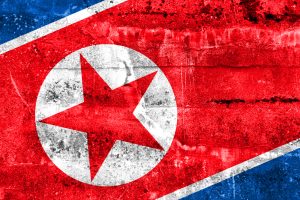North Korea launched two medium-range ballistic missiles (MRBMs) toward its eastern waters on Sunday, South Korea’s Joint Chiefs of Staff (JCS) said.
According to the South Korean JCS, the launches were conducted sometime between 11:13 a.m. and 12:05 p.m. KST from the Tongchang area of the North Pyongan Province. The maximum altitude of the missiles was about 500 kilometers, according to the JCS.
Rather sharing more details on the performance of the missiles, the JCS announced that it will only provide restricted information on the North’s tested missiles from now on. The main rationale behind this decision is the probability of the North taking advantage of differing reports on its missile tests to sow confusion. Kim Yo Jong, the powerful sister of the North Korean leader Kim Jong Un, once downgraded Seoul’s analysis on the North’s cruise missile test in August 17 by pointing to a different location as the test site.
Sunday’s launch came a month after North Korea launched its Hwasong-17 intercontinental ballistic missile (ICBM) when South Korea and the United States conducted extensive military exercises.
The JCS condemned the North’s latest launch by calling it a grave act of provocation that hurts the peace and stability of the international community. It also emphasized that the launch is a clear violation of the U.N. Security Council resolutions and vowed to keep a firm military readiness posture through close coordination with the United States.
As North Korea had conducted a test of high-thrust solid-fuel motor on Thursday in the same area, it was speculated that the North might launch ballistic missiles attached to the motor it had tested on Thursday.
Korean Central News Agency (KCNA), North Korea’s state-controlled media, reported on Monday that Sunday’s missile test was for “an important final-stage test for the development of reconnaissance satellite.” It also confirmed that the test was carried out by the National Aerospace Development Administration (NADA) at the Sohae Satellite Launching Ground.
“The test was conducted in the mode of evaluating the processing capability and stability of data transmission devices while verifying the reliability of ground control system including photography control command and attitude control command for various kinds of cameras in the optimum environment simulating space environment after high-angle launch of a test-piece satellite into the altitude of 500km,” a spokesperson of the NADA was quoted by saying in the KCNA report. Among the tested equipment, the spokesperson mentioned “one panchromatic camera for 20m resolution test, two multispectral cameras, video transmitter and transmitters and receivers of several bands, control devices and batteries.”
Along with the details of the test conducted on Sunday, the spokesperson also added that “the test was mainly aimed to evaluate the capabilities of satellite photography and data transmission system and ground control system.”
The development of military reconnaissance satellites is one of the goals in its five-year military modernization plan that was introduced in the Eighth Congress of the Workers’ Party of Korea (WPK) in January 2021. In light of the KCNA’s report regarding Sunday’s missile test, North Korea seems to have steadily developed reconnaissance satellite capabilities following its reconnaissance satellite test launch in March.
“The NADA announced that it would finish the preparations for the first military reconnaissance satellite by April, 2023,” KCNA reported.
With the details of its test conducted on Sunday, North Korea also shared captured images of the areas of Seoul and Incheon, the capital and the western port city of South Korea, respectively. One of the images seemed to be the area where the South’s presidential office is located, but the quality of the pictures was considerably low, calling into question the capabilities of North Korea’s reconnaissance satellite.
Although KCNA did not mention the guidance of Kim Jong Un at the site of the reconnaissance satellite launch, it is believed that he stayed in the Tongchang area from Thursday to Sunday, as he appears to have not attended the 11th anniversary of his father Kim Jong Il’s death on Saturday.
Unlike the many missile launches taken as a corresponding measure against the South Korea-U.S. joint military drills, Sunday’s reconnaissance satellite launch appeared to be a scheduled event, as it was described as the final-stage test for the development of a reconnaissance satellite. Considering the South’s successful test of its indigenous Nui rocket, which was sent to orbit in June, North Korea might have wanted to show that it can also develop a military reconnaissance satellite.
North Korea will likely keep bolstering its efforts to develop other advanced nuclear weapons, including ICBMs and submarine-launched ballistic missiles (SLBMs), to achieve the five-year military modernization plan in the coming years. As Japan announced its new National Security Strategy involving counterstrike capabilities against missile attacks on Friday, Pyongyang might interpret Tokyo’s and Seoul’s efforts to strengthen defense capabilities as a clear threat to its security.
As Japan has raised the probability of it launching missiles toward North Korea as a countermeasure, Seoul said that Tokyo would need to get its approval to undertake any military activities that target North Korea or could break the status quo on the Korean Peninsula. However, Tokyo stated that it does not have to get approval from other countries, as its counterstrike capabilities are an exercise of the right of self-defense.
In October, North Korea launched an intermediate range ballistic missile that overflew Japan. Under international and domestic law, Japan can only exercise its counterstrike capabilities once attacked. However, if Japan deems future North Korean missile tests as an attack or a grave act of provocation threatening the security of the country, military conflict between North Korea and Japan could happen.

































